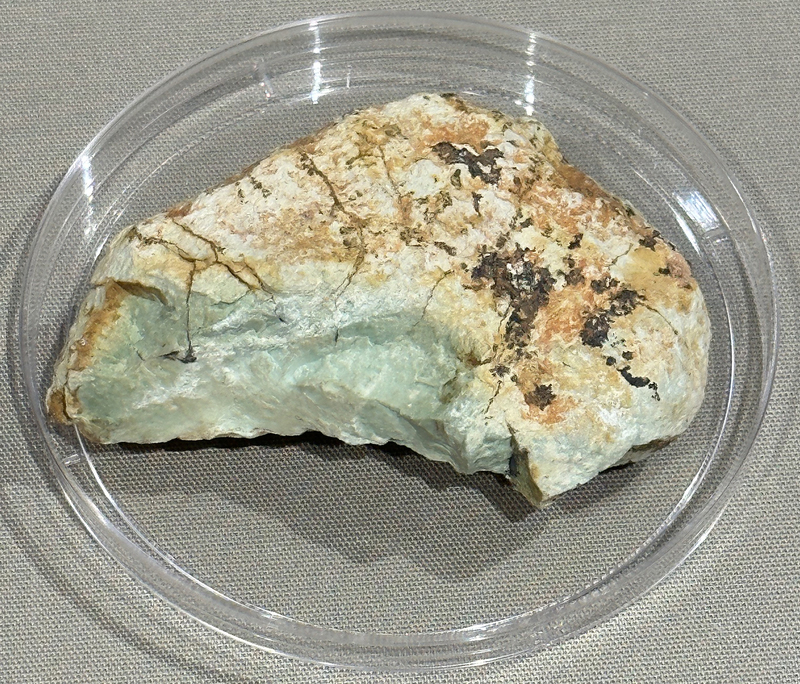Alum
ALUM: THE WHITE ROCK THAT MADE COLORS POSSIBLE
Most of Barclay’s recipes recommend that fibers be soaked in a solution of alum—a naturally occurring mineral (aluminum potassium sulfate) that brightens dyes and locks them onto cloth. For centuries alum was one of the most valued substances in the world because many dyes simply would not stick to textiles without it.
This specimen of alum came from Utah, but most alum used in Europe had been mined in Anatolia (Turkey). Ottoman conquest of Istanbul in 1453 significantly reduced European alum supply, but, amazingly, alum deposits were soon discovered just outside of Rome. This gave the Vatican a lucrative monopoly over European alum trade for much of the 16th-century. The British Isles, with their waves of Protestant Reform, were rarely on good trading terms with the Pope, so they needed other alum supplies. Eventually miners in Yorkshire figured out how to make a nice alum by roasting shale over a period of months. Barclay, being in Scotland, probably used alum that had come from Yorkshire.
— Written by Sarah K. Rich (Art History, Center for Virtual/Material Studies)

